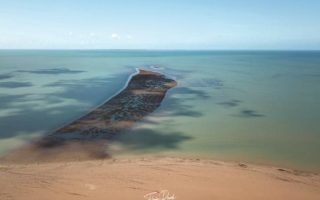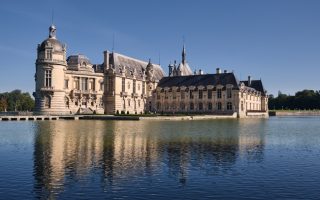Countryside Bliss Among Tarn’s Hilltop Villages

Home to Gaillac wines and a plethora of beautiful villages, Tarn is a destination of choice to unwind, take it slow and immerse in the gentile atmosphere of southern life.
Arriving at the magnificent Domaine du Buc in Tarn on a warm, sunny evening represents French bucolic heaven. Nothing tantalises like the crunch of tyre on gravel along the snaking approach to this supremely elegant hideaway, the base for a ‘slow tourism’ sojourn in this lovely department east of Toulouse.
I glimpse two fawn on a jolly jaunt through the long grass down in the main field, as my host Brigitte Lasage emerges to welcome me to her prestigious chambre d’hôtes, in the family for generations. We are a mere stone’s throw from both the local winemaking hub, Gaillac (vineyards drape the rolling fields all around), and the departmental capital and pink-hued gem, Albi (for cultural fixes, from the Toulouse-Lautrec museum to the majestic cathedral). However, this Tarn mini-break will be strictly rural – out in the sticks where the living is slow and measured, the produce exceptional and the villages as beaux as can be.
After an apéro and supper platter of local goodies par excellence – dried ham, cheeses and early-season strawberries – I set about plotting the next day’s escapades. Three hilltop wonders proudly boasting the Plus Beaux Villages label (a guarantee of top-notch aesthetics and amenities) – Cordes-sur-Ciel, Puycelsi and Castelnau-de-Montmiral – are on my visit list, plus the spectacular Château de Penne, a precariously placed lookout and former garrison currently in the throes of a major renovation to former glory thanks to a local architect’s passion and deep pockets.

Lautrec, another village to add to your Tarn bucketlist © Olivier Octobre
Medieval villages galore
After breakfast on Saturday morning, I wind my way towards the first of my medieval marvels, Cordes-sur-Ciel. Spied from the panoramic viewpoint on an opposing hill, the village’s cloud-piercing majesty on a promontory is quite breathtaking, and unsurprisingly it is one of the most photographed sights in all of France. Arriving in town, after taking advantage of free parking for market day, I head to le marché in the lower section, which presents all manner of locally produced treats to browse, taste and snap up, from jams to breads and other delicious comestibles, plus flowers, clothing and much more.
A small train takes visitors uphill on a guided tour (English translation available) but I choose to explore the fortified gates, ramparts and sculpted Gothic façades of the ancient upper reaches by foot. First, I pop into the cute and beautifully decorated La Capelette, a 16th-century chapel featuring spirited paintings from the 1940s that evoke Cordes’ status as an important Way of St James pilgrimage waymarker. Carefully treading the steep cobblestone alleys (Cordes by foot requires a certain exertion) to take in the sumptuous houses, built on the wealth of textile traders and noblemen, I reach La Grand’rue Raimond VII – named after the Toulouse count who founded the village in 1222 – which is where things get very pretty indeed. Arriving at the Les Halles market square, my guide Catherine points out the remarkable village well (puits) which plunges more than 100m down, as well as eye-pleasing Gothic edifices including the amazing Maison du Grand Fauconnier (House of the Great Falconer) and, further along, the Maison Prunet and Maison Carrié-Boyer.
For a truly slow approach to exploring, stop here and there for arts and crafts boutique browsing, plentiful photo opportunities and a visit to the mouthwatering museum dedicated to the culinary mastery of sugar and chocolate, the creation of sweet-toothed Tarn legend, pâtissier Yves Thuriès. My own sugar craving is met by snaffling a bag of croquants de Cordes, a terrific local nibble made of egg white, sugar and almonds. I got them at the charming wine bar and épicerie fine, La Planche de Bacchus, just along from the idyllically-housed tourist office, knowing they would not see the day out.
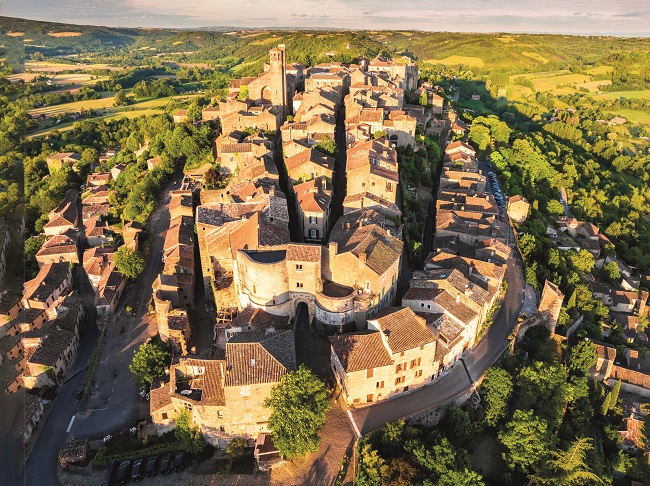
Cordes-sur-Ciel © Loïc Lagarde
Leaving Cordes in my rear-view mirror, I made my way to Penne – 30 minutes away – for lunch (decent magret-frites at La Terrasse). This historic ribbon of a little village – think timber-framed houses and mysterious, moody narrow alleys – is perched above the Aveyron gorge with the astonishing fortified Château de Penne as its iconic original lookout point over the deep valley below. It has been listed as an historical monument since 1902, but only when architect Axel Letellier bought it in 2006 did it start to have a future and not just a past.
The project to restore the ruins to some kind of secure, visitable state is well under way, and what an impressive project it is. Combining the talents of historians and stonemasons, pending plans include night lighting, a museum and café. A small visitors’ centre and shop has just opened, with entry to the site just €6 for adults, and lots of workshops and shows to please all the family this summer. Penne the village is very attractive in a more earthy, unpolished manner than Plus Beaux Villages and is a Tarn must-see.
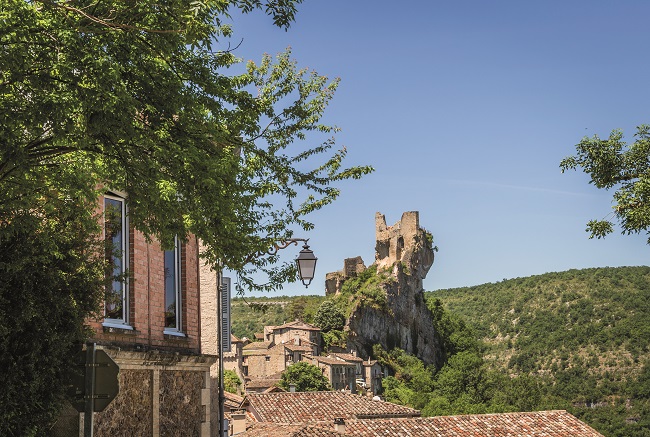
The perched castle of Penne © Pascale Walter / CDT Tarn
A tasty interlude
A late afternoon stop at the organic winemaker Domaine Plageoles, in Cahuzac-sur-Vère, revealed to me the true link between the Tarn terroir and its people. Seven generations of vignerons have turned grapes to wine here, with priority given to reintroducing ancient cépages like Mauzac and Oudenc. As Bernard Plageoles explains while handing me a small snifter of his best-selling Mauzac Nature – a lovely, light fizzy – this takes time and commitment, with each vine regrowth taking ten years. This slow-grow ethos sits perfectly with the slow tourism trend now dominating modern French tourism.
There are countless such passionate makers to visit in the AOP Gaillac winegrowing area – check with the regional tourism board when planning your trip to ensure a satisfying stop-off and the chance to stick a few bottles in the boot. With its rolling hills and vineyards, the area is nicknamed ‘the Occitan Tuscany’ and all around, producers lay on dreamy summer concert apéritifs, in places like Cordes, Penne and Puycelsi, as well as Solex (electric bike) and bicycle activities in the vineyards.
Gaillac tipples accompany local Tarn produce perfectly – notable goodies of distinction are the pink garlic of Lautrec – a stunning Plus Beau Village in the heart of Pays de Cocagne which I promise to visit next time – and many cuts of delicious charcuterie from Lacaune.
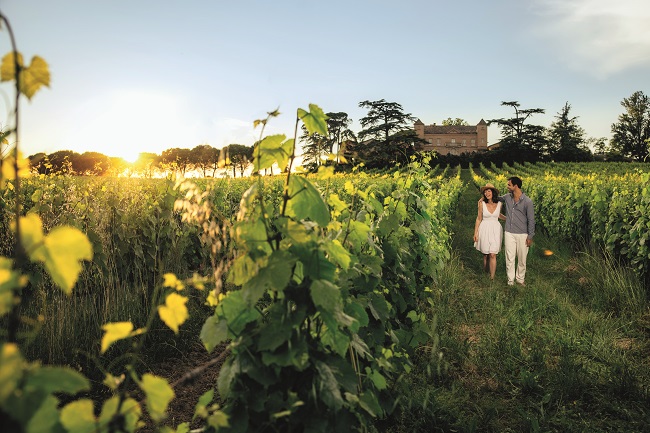
Taste the delicious Gaillac wines on your trip to Tarn © Buchowski
A Sunday stroll
After a superb dinner that evening in Gaillac at the Bib Gourmand Michelin-labelled restaurant, Vigne en Foule then a brief amble around the town’s great outdoor market next morning on Place du Griffoul and La Place de la Libération, I head to Castelnau-de-Montmiral, another Plus Beau Village to embolden the senses. A bona fide stunner, it is the perfect spot for a lazy, tranquil Sunday stroll. Not to be missed are La Place des Arcades, the arcaded central square that houses the tourist office (maps and brochures freely available) and Notre-Dame de l’Assomption church (be wowed by the jewel encrusted reliquary cross in the sacristy and the vault frescoes from the 19th century representing scenes from the life of the Virgin Mary).
I especially enjoyed a chat with the jolly owners of Boudu, a shop selling quality gifts (hoodies, mugs, jackets and much more) featuring logos and sayings in the Occitan language (Boudu is a derivative of Bon Dieu, meaning ‘Good Lord’ and is a common local utterance of annoyance or surprise.) After leaving the village, I pop over to Pech Miral to see the statue of the virgin and admire a nice view of the village and surrounding countryside.
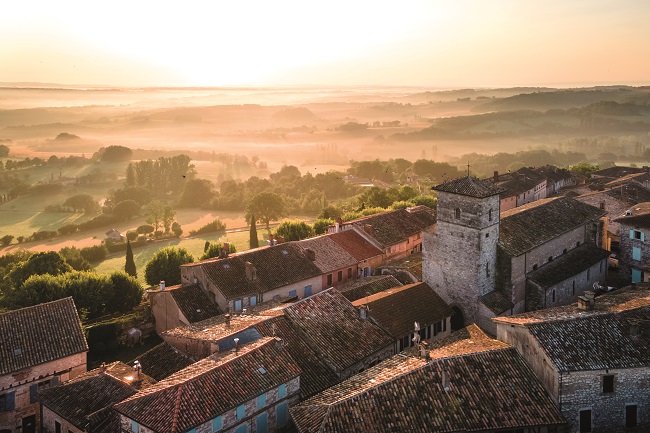
Castelnau-de-Montmirail © Entre 2 Poles
The final stage of my slow tourism Tarn jaunt is another Plus Beau Village, and the one which has perhaps the most characterful medieval ambience: Puycelsi.
After a splendid lunch with sublime terrace views at Le Jardin de Lys, I head off for a wander around the warren of twisted alleyways and small squares of this fortified medieval village built on a huge rock overlooking the River Vère. Known as “the fortress in the woods”, I loved its beautifully preserved colombage (half-timbered) houses and the Église Saint-Corneille with its astonishing blue painted ceiling.
It is the perfect place to conclude my laid-back voyage of discovery in quiet contemplation, in the knowledge that I’ve only scratched the (admittedly very attractive) surface of ‘Slow Tarn’ and will be back for more one day.
From France Today magazine
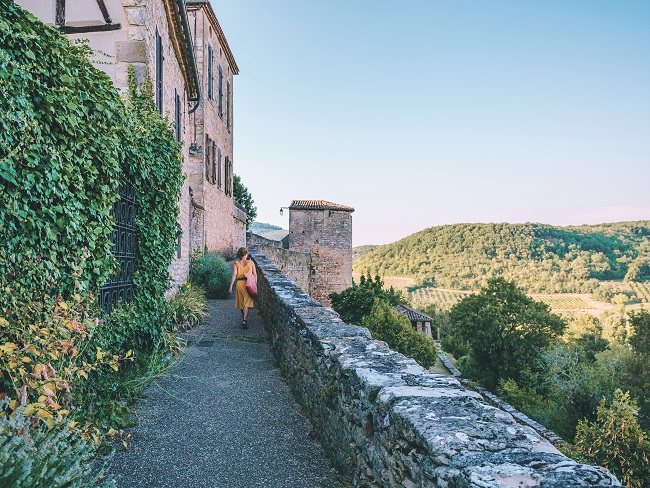
Walking the narrow streets of Puycelsi © Mary Quincy
Lead photo credit : The hilltop village of Puycelsi © Entre 2 Poles
Share to: Facebook Twitter LinkedIn Email
More in French villages, occitanie, Plus Beaux Villages, South of France, tarn
Leave a reply
Your email address will not be published. Required fields are marked *

